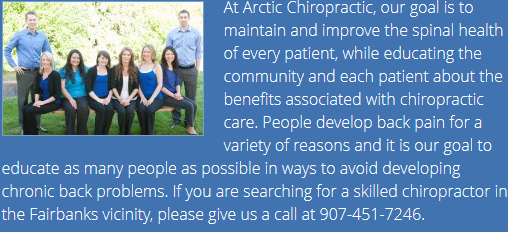Putting Pressure On Your Discs
Back problems affect millions of Americans. Whether it is simply an annoyance or a crippling pain, many people deal with back issues on a daily basis. While there are many causes of back problems, there are a few causes that are more popular than others. These include simple absentmindedness, sitting still for too long and poor exercise techniques. Many people don't realize that their everyday activities can lead to back problems. Simple tasks like taking out the garbage or doing the laundry or dishes can hurt your back if your body isn't in the best shape. In addition, if you're not thinking about what you are doing or are concentrated on something else, you can severely hurt yourself. A way to make sure that you don't injure yourself doing the everyday chores is to train yourself to keep your core muscles engaged. A simple way to do this is to pull your navel toward your spine and imagine you're wearing a corset that pulls the sides of your abs inward. Doing that throughout the day, and especially when lifting or bending, strengthens and supports your back, says Esther Gokhale, author of 8 Steps to a Pain-Free Back and owner of Esther Gokhale Wellness Center in Palo Alto, California. Although sitting down may not seem that detrimental to your back, it actually is. Sitting for too long can harm the discs in your back because they don't get the blood flow they need. As Michael Hisey, MD, orthopedic surgeon and president of the Texas Back Institute in Denton, Texas, said "When you move, fluid circulates through the discs. When you sit still, the fluid is wrung out, so you're depriving discs of nutrition." When you sit for long periods of time, you're adding mileage to your discs which in turn adds stress to your back. "The discs in your spine are nourished by motion," Hisey says. "So sitting still is hard on your back and neck, and can do long-term damage." Studies have shown that sitting puts more pressure on your spine than lying down or standing up. Nick Shamie, MD, associate professor of orthopedic neurosurgery at UCLA and spokesmen for the American Academy of Orthopedic Surgery explains, "The worst posture is sitting and leaning forward." This makes you lock your pelvis and flex your spine, putting pressure on the front of the vertebrae, where your discs are. The more you arch forward and exaggerate the curve of the spine, the more pressure you're putting on your discs. "This uneven pressure on a disc puts it at high risk of rupture," says Shamie. This stagnant disc damage can easily be prevented. One tactic is to get up and move around every 20 minutes, unless you're driving of course. Another tactic is to keep your spine properly aligned by holding reading material at eye level rather than bending over. Don't lean over a desk or table to work. Your spine should be straight whenever possible. An obvious solution to back problems would be to pick a chair that supports your back. Adjust the chair so that your feet lay flat on the floor. If the chair doesn't support the curve of your back, place a towel or small pillow behind your lower back. Remove anything from your back pockets, i.e. a wallet, if you're going to be sitting for long periods of time as this throws your spine out of alignment. Finally, one of the most common ways people hurt their spine is by poor exercise techniques. Simple put by Dan McMackin, a spokesmen for UPS, "Improper bending and lifting causes back injury; that's all there is to it." This can simply be fixed by changing a few things when lifting heavy objects. Engage your abs to help support your back. Bend your knees and keep your back straight, don't bend at the waist. Keep the object close to you; the farther away you hold the object from your body the more it stresses your back. Never hold an item higher than your armpit or lower than your knees. Don't move something that weighs more than 20% of your body weight. Finally, DON'T pivot, twist or turn while lifting. Change direction with your feet, not your waist. If you do suffer a back problem, there are chiropractors that can help to alleviate some of the pain or discomfort and attempt to solve the problem. Some of the most common techniques chiropractors use are the diversified technique, the extremity manipulating/adjusting technique and the activator methods. The diversified technique is the most commonly used of all chiropractic techniques and is the one most familiar to patients. It consists of a high-velocity, low-amplitude, thrust that usually results in a cavitations of a joint. This technique is associated with the popping noise heard when the joint "cracks". The manipulating or adjusting of an extremity is the application of adjusting to joints other than the spine, such as the shoulder, elbow, wrist, hand, finger, knee, hip, ankle, foot, toe, etc. This technique would most likely be used in patients with carpel tunnel syndrome, gait, or posture-related problems. The activator method is a hand-held, spring-loaded instrument- based manipulation/adjusting protocol. Instead of the manipulating/adjusting forces being delivered by hand, force is generated with the small appliance that delivers a lighter, but quicker, thrust than can be delivered by hand. Activator can be used as a primary treatment protocol for all patients or a selective method for patients who may not desire manual manipulation/adjustment or where manual manipulation/adjustment may be contraindicated.





 Home
Home




